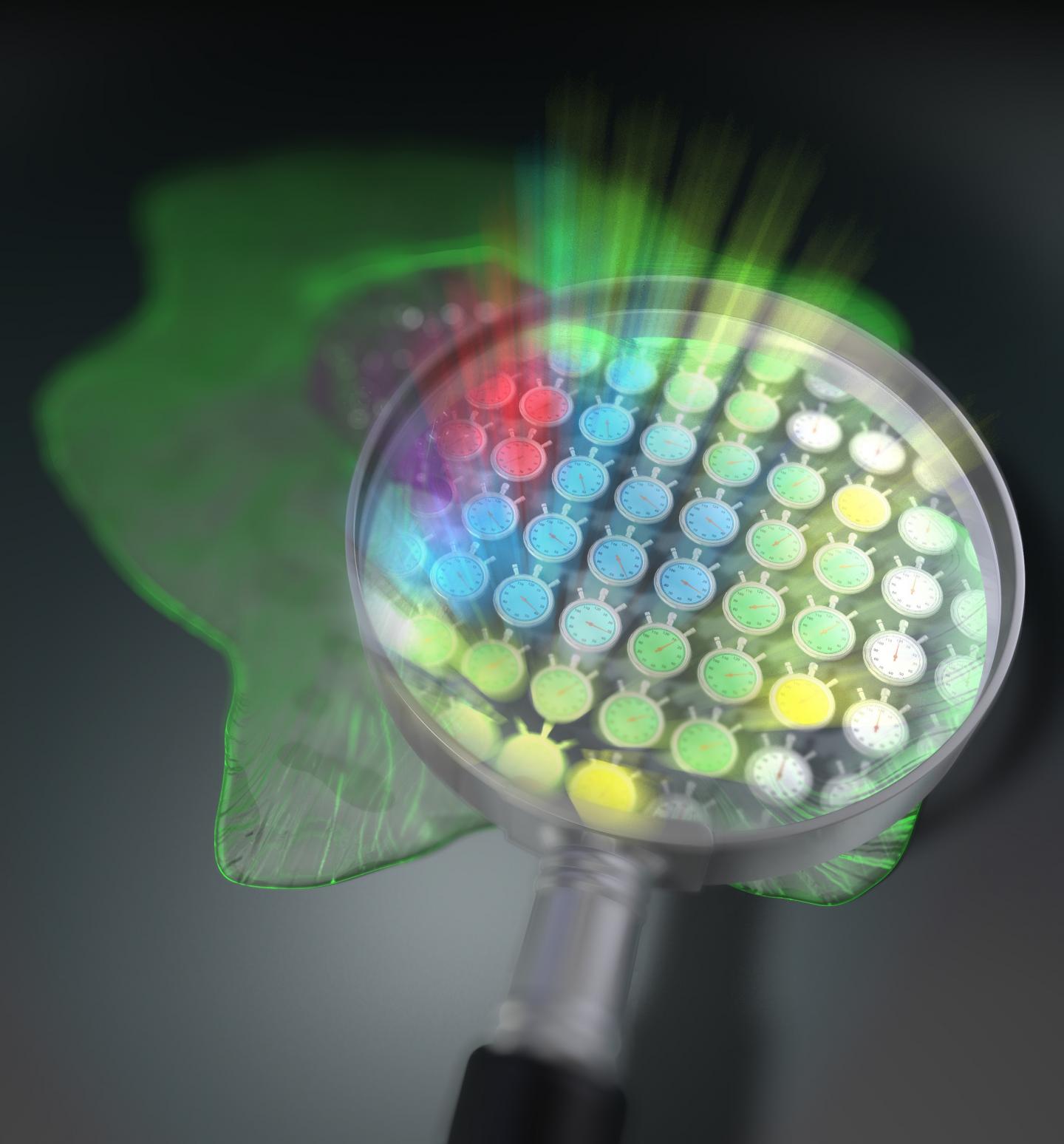Scientists develop a fluorescence “lifetime” microscopy technique that uses frequency combs and no mechanical parts to observe dynamic biological phenomena
Credit: Tokushima University
Fluorescence microscopy is widely used in biochemistry and life sciences because it allows scientists to directly observe cells and certain compounds in and around them. Fluorescent molecules absorb light within a specific wavelength range and then re-emit it at the longer wavelength range. However, the major limitation of conventional fluorescence microscopy techniques is that the results are very difficult to evaluate quantitatively; fluorescence intensity is significantly affected by both experimental conditions and the concentration of the fluorescent substance. Now, a new study by scientists from Japan is set to revolutionize the field of fluorescence lifetime microscopy. Read on to understand how!
A way around the conventional problem is to focus on fluorescence lifetime instead of intensity. When a fluorescent substance is irradiated with a short burst of light, the resulting fluorescence does not disappear immediately but actually “decays” over time in a way that is specific to that substance. The “fluorescence lifetime microscopy” technique leverages this phenomenon–which is independent of experimental conditions–to accurately quantify fluorescent molecules and changes in their environment. However, fluorescence decay is extremely fast, and ordinary cameras cannot capture it. While a single-point photodetector can be used instead, it has to be scanned throughout the sample’s area to be able to reconstruct a complete 2D picture from each measured point. This process involves movement of mechanical pieces, which greatly limits the speed of image capture.
About Tokushima University, Japan
Established in 1949 by merging multiple education facilities into one, Tokushima University has grown to become one of Japan’s most prestigious universities. Its current vision is the search for truth, the creation of knowledge, and the development of eminent sciences and cultures with a spirit of independence and autonomy, all for the peaceful development of humanity and the solution of social issues. Tokushima University counts with seven faculties, eight graduate schools, and an institute of liberal arts and sciences distributed across three main campuses, serving 5,900 undergraduate students and over 2,000 graduate students. The university also counts with over 200 international students from 29 countries. Tokushima University is open to the whole world and works hard to create a rich and peaceful society for the future.
Website: https:/
About Institute of Post-LED Photonics (pLED), Tokushima University, Japan
This institute was established in Tokushima University in March 2019 to open a new field of invisible next-generation light, i.e., deep ultraviolet, infrared, and terahertz. Research in pLED includes development and application of the practical light source in that wavelengths. pLED also develop innovative medical techniques by combining optical science with medical science. All researchers with different expertise carry out cutting-edge optical science, while sharing the same vision and direction. pLED will develop interdisciplinary research beyond one specialized field through close communication and interaction between researchers with various backgrounds.
Website: https:/
About Professor Takeshi Yasui from Tokushima University
Prof. Takeshi Yasui graduated from Tokushima University, Japan, in 1992 and proceeded to get two doctoral degrees: one in Engineering from Tokushima University in 1997 and one in Medical Science from Nara Medical University in 2013. Since 2019, he has been Director of Institute of Post-LED Photonics (pLED), Tokushima University. He has published over 100 peer-reviewed papers and is currently interested in research on optical frequency comb, terahertz instrumentation, and nonlinear optical microscopy.
https:/
Funding information
The study was supported by grants for the Exploratory Research for Advanced Technology (ERATO), Japan Science and Technology Agency (MINOSHIMA Intelligent Optical Synthesizer Project, JPMJER1304), Japan Society for the Promotion of Science (18H01901, 18K13768, 19H00871), Cabinet Office, Government of Japan (Subsidy for Regional University and Regional Industrial Creation), Nakatani Foundation for Advancement of Measuring Technologies in Biomedical Engineering, and Research Clusters program of Tokushima University (1802003).
Media Contact
Mio Yamada
postled@tokushima-u.ac.jp
Original Source
https:/
Related Journal Article
http://dx.





